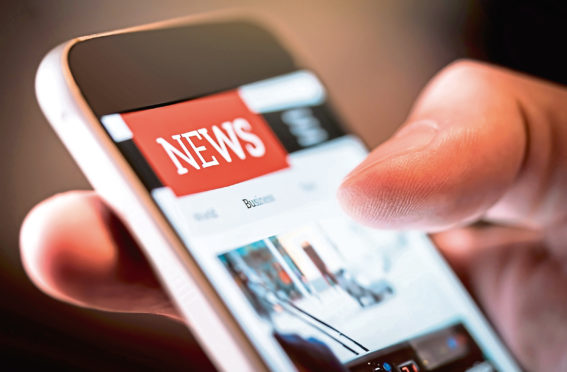My uncle sits at the kitchen table, his newspaper spread out in front of him.
It’s barely 7.30am, but he’s already been out to collect it from the shop and is several pages in.
It isn’t unusual either, now that he’s retired, for him to be in the same spot a number of hours later, such is his dedication.
He certainly gets his money’s worth, reading each page assiduously.
And while he moans every time I see him about how much the title – I won’t reveal which – has gone downhill, he still devotes his morning to it most days of the year.
As a print journalist, it’s hugely satisfying to watch someone relish reading the news the traditional way.
He’s an increasingly rare breed; in fact, the only person I know who reads a paper daily.
It’s no secret that a steady decline in readership is something the industry – with some notable exceptions – has had to face up to over the past couple of decades.
The way we get our news has necessarily changed to fit in with our ever busier lives.
Most of us read it digitally now, whether online or in e-edition format.
Moreover, many are turning away from traditional media outlets altogether, instead getting their news via social media platforms.
Indeed a survey, carried out in the US at the end of last year, found more Americans now obtain news from social media sites than from print newspapers.
To my mind, which I guess is inevitably biased, this is a great shame. But, as the saying goes, you can’t stand in the way of progress.
I accept we can’t afford to pine for a bygone golden era that isn’t coming back.
I also value press freedom above all and think it’s brilliant that a growing number of people want to share opinions and have their voices heard.
But, in this world where anyone with access to a computer and internet connection, or a basic smartphone, can publish “news”, we need to be vigilant and make sure quality journalism isn’t drowned out amid the cacophony; it is needed as much today as at any other time in history.
First, and perhaps foremost, it is one of our most powerful weapons in the struggle against fake news, which can spread so quickly online with potentially harmful consequences.
Obviously, social media firms have to take responsibility when it comes to their platforms.
And Instagram’s decision, announced a few days ago, to introduce an option for users to report posts they don’t think look right or contain falsehoods – like misleading pseudo-science – is an enormously positive step.
Not only can these reports be used to train artificial intelligence to root out unreliable content in the future, but anything that helps create a more discerning, thoughtful audience should be applauded.
Furthermore, it might also motivate people to look for different sources of information, which could in turn encourage them to see the value in paying for their news.
But flagging inaccuracies, or deliberate lies, is only half the process.
It’s then up to us professional journalists to provide thoroughly researched, engaging alternatives readers can trust.
Alongside the scourge of fake news, we must consider too the media’s role in holding to account those we elect to represent us; our lawmakers, and those who run our country.
This is where traditional media comes into its own.
There’s no better example than Boris Johnson’s recent debut, People’s PMQs on Facebook, which may become a regular slot.
I’m all in favour of bringing democracy as close to the voters as possible.
However, this forum composed of safe, pre-selected questions with no opportunity for follow-up probing or proper scrutiny, mustn’t be allowed to replace a good old-fashioned grilling at the hands of an experienced reporter live on air or an in-depth newspaper interview.
Traditional media might try to boycott such events, but refusing to report on them is easier said than done, because if the prime minister utters something significant it is news, wherever it was said.
The bottom line is that those who ignore it risk losing readers or viewers, so ultimately this approach has us over a barrel, as Boris – no stranger to the business – knows only too well.
I promised myself this wouldn’t turn into a rant, but I might finish with one if you’ll humour me.
It’s not uncommon to hear folk harp on about the “evil” mainstream media.
I regularly find myself defending my chosen profession, and had to again this week in conversation with a mum friend.
Clearly, certain reporting practices exposed in the not too distant past were abhorrent and justifiably caused many to question their faith.
For such indefensible behaviour, undoubtedly, we collectively deserve the flak.
Nor are we immune to errors. I’ll admit to twice messing up royally during 10 years in the trade. After all, journalists are humans, not robots – for the moment, anyway.
But, while we are far from perfect, it’s worth remembering that without us, without a free press, our democracy would be weaker and we’d all be worse off.











